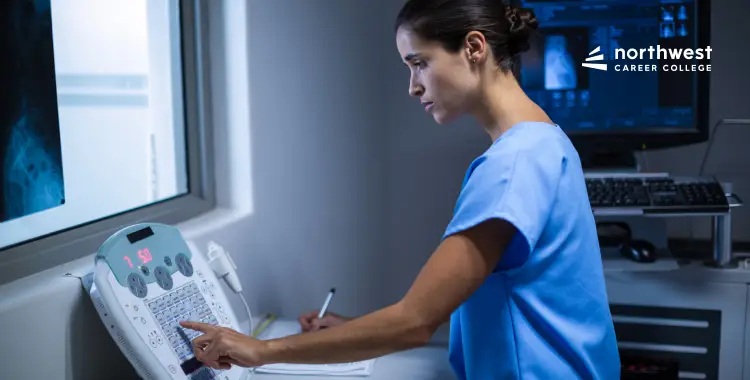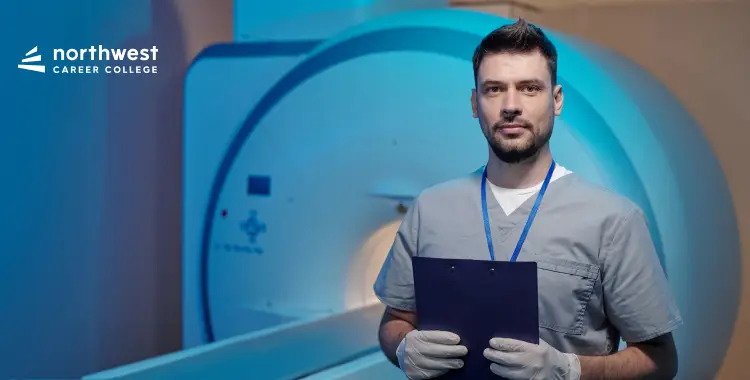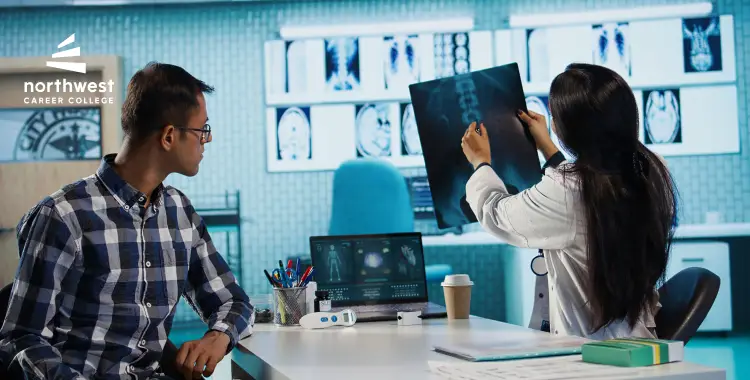5 Hygiene Mistakes That Radiographers Frequently Make
- October 31, 2025
- 798 views
- 3 min read
Maintaining good sanitation and cleanliness in your environment is a big part of working in the healthcare industry. You, as a radiographer, have many to-do lists for today.
However, those medical tasks shouldn’t hinder you from practicing and maintaining proper cleanliness and hygiene, because it can lead to bigger problems like spreading germs.
In this blog, we’ll discuss five common hygiene slip-ups that radiologic technology students should avoid.

Table of Contents
1. Skipping hand washing between patients
This may sound like a no-brainer, but it occurs too often. You may be in a hurry or running from room to room, but not washing your hands is a grave error.
Your hands may transfer germs from one person to another, even if they appear clean. Washing your hands before and after seeing each patient reduces disease transmission.
Use soap and water or alcohol-based hand sanitizer. It’s a small thing, but it significantly impacts keeping patients safe.
2. Using Pungent Perfumes or Colognes
Working with patients, particularly in small rooms, can be problematic because of scents. Some are sensitive to scents, and others may have allergies. A strong smell can make them cough, feel ill, or have a headache.
You shouldn’t wear colognes, perfumes, or heavily perfumed body sprays to remain professional. Use unscented lotions and deodorant. It’s one less potential issue that could make a patient feel uneasy.
3. Failure to Properly Clean the Equipment
A radiographer student will also learn how to work with various tools and equipment, and just as crucial is learning how to clean them correctly.
If equipment is not wiped down between patients, germs are transferred. A simple positioning pad or control panel can also harbor bacteria.
Take time to clean each surface that the patient comes into contact with. Use products your clinic or school has taught you to use. This reflects that you’re concerned with keeping them healthy and that you’ve learned infection control.
4. Dirty Scrubs or Wrinkled Scrubs
Your scrubs tell a lot. If they’re stained, wrinkled, or look like they’ve been on for days, patients will assume you don’t care and that the environment isn’t clean.
Keep your scrubs clean daily. Wash them frequently and change them if they are soiled during a shift. Keeping it clean makes patients feel safer with you.
5. Neglecting Your Nails and Hair
Dirty nails can trap bacteria and dirt even if they appear clean. They can also scratch patients or wear gloves. A bright polish or artificial nail set can distract or chip off during work. Keep them short and clean. Avoid polish when you are in clinical training.
Also, have your hair tied back if you have long hair. You do not want it in your face or against a patient. It’s a sign of respect toward yourself and the patients you care for to keep your hair neat.
Final Thoughts
Good hygiene isn’t just a personal habit—it’s a professional responsibility, especially in radiologic technology. As a student, building strong hygiene practices now will help you earn trust, keep your work environment safe, and show respect for your patients and coworkers.
By avoiding common mistakes—like skipping handwashing, wearing strong scents, or forgetting to clean your equipment—you’ll be better prepared for clinical settings and future jobs.
If you’re thinking about becoming a radiographer, visit Northwest Career College. You can graduate in as little as 18 months, and financial aid is available for those who qualify. You’ll be ready to work in hospitals, small practices, or surgical centers with your training. Start your path toward a rewarding healthcare career today!




